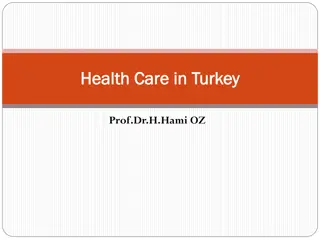
Trademark Law: Extended Protection and Limitations Explained
Delve into the complexities of trademark law with a focus on extended protection, limitations, due cause, and the interplay between double identity and likelihood of confusion. Explore cases such as Inditex vs. Zara and gain insights into the relevance of proportionality in trademark protection.
Download Presentation

Please find below an Image/Link to download the presentation.
The content on the website is provided AS IS for your information and personal use only. It may not be sold, licensed, or shared on other websites without obtaining consent from the author. If you encounter any issues during the download, it is possible that the publisher has removed the file from their server.
You are allowed to download the files provided on this website for personal or commercial use, subject to the condition that they are used lawfully. All files are the property of their respective owners.
The content on the website is provided AS IS for your information and personal use only. It may not be sold, licensed, or shared on other websites without obtaining consent from the author.
E N D
Presentation Transcript
TLI protection beyond indicating origin
Reminder point of departure Apart from Benelux law, use of marks for other purposes than distinguishing goods or services is not captured by trade mark law On the other hand, use for (or: in relation to) goods or services in the meaning of tm law is interpreted so broadly by the CJEU that the carve-out is ineffective Use of a mark in relation to goods or services is infringing in case of double identity, if the functions are jeopardized in case of similarity, if likelihood of confusion (l.o.c.) arises in case of a mark with reputation, if detriment is caused or unfair advantage is taken of the reputation or distinctive character (extended protection)
Limits In the case of double identity or l.o.c., the tm holder cannot object to the use if the limitations (Art. 14 TMD/EUTMR) apply In the case of extended protection, the tm holder cannot object if the use is made with due cause Q: How do the limitations and due cause relate to each other? Co-extensive? Due cause = limitations Narrower? Due cause > limitations Broader? Due cause < limitations
Inditex, CJEU C-361/22 Marketing campaign by a telecommunication services provider, including a prize draw offering a gift card for ZARA shops, with prominent display of the Zara logo Complaint filed by Zara first based on l.o.c. and extended protection, ultimately limited to extended protection Appeal Court finds that the use did not damage or take unfair advantage of Zara s reputation But: on appeal before the Tribunal Supremo it remained contentious whether application of the limitations in their previous version, i.e. Art. 6(1)c TMD (89/104), leads to a different result Question referred to CJEU: Does Art. 6(1)c TMD 89/104 have a narrower meaning compared to Art. 14(1)c TMD 2025/2436?
Answer and more questions Easy answer: Yes, of course it has. More important than that: Why should the breadth of the limitation be decisive in a case turning on extended protection? What about due cause? Due cause = limitations Due cause < limitations But what about Interflora and Leidseplein? Due cause > limitations
Relevance of proportionality, I The broader the scope of protection, the stronger the need for effective checks and balances The notion of extended protection imports a concept originating from unfair competition law This implies a substantial degree of flexibility regarding the limits of protection (Trojan horse-effect) The limitations may serve as inspiration, but cannot be binding on what is considered as due cause
Relevance of proportionality, II In addition to compelling a broad notion of due cause, proportionality is also decisive for finetuning the scope of protection beyond indicating origin For instance: Indicating that a gift card for Zara is among the pizes in the draw must be legal, but the logo should not be used excessively (e.g. much bigger print than the text) The same should apply to the benchmark of honest practices in the limitations General rule: Unfairness begins where the advantage drawn by the alleged infringer is disproportional to her own contribution






















